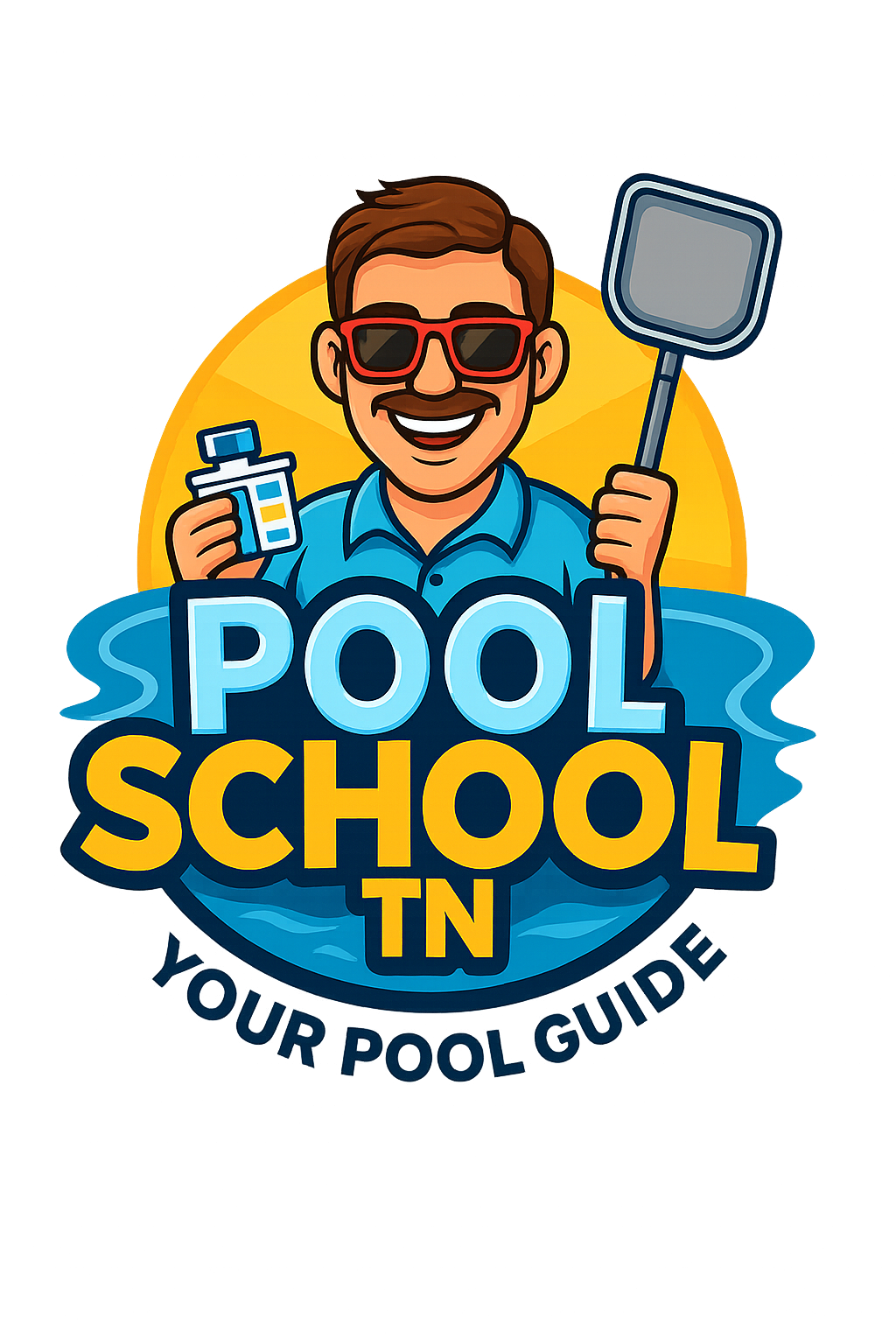Maintaining crystal-clear, safe swimming water doesn’t have to be complicated. Whether you’re a first-time pool owner in Tennessee or looking to refine your pool care routine, understanding pool chemicals is the foundation of proper pool maintenance. This comprehensive guide will walk you through everything you need to know about pool chemicals, from the basics to advanced troubleshooting.
💡 Quick Tip: Start with the “Big Three” chemicals—chlorine, pH balancers, and alkalinity—before adding complexity to your routine.
The Big Three: Essential Pool Chemicals
1. Chlorine – Your Pool’s Primary Sanitizer
Chlorine is the workhorse of pool sanitation, killing bacteria, viruses, and algae that can make your pool unsafe and unsightly.
Types of Chlorine:
- Liquid Chlorine (Sodium Hypochlorite): Fast-acting and easy to use, but has a shorter shelf life
- Granular Chlorine (Calcium Hypochlorite): Stable and long-lasting, perfect for shock treatments
- Chlorine Tablets (Trichlor): Slow-dissolving and convenient for maintaining consistent chlorine levels
Ideal Range: 1.0-3.0 ppm (parts per million) Tennessee Tip: Our hot, humid summers can cause chlorine to burn off faster, so test levels more frequently during peak season.
2. pH Balancers – Keeping Your Water Comfortable
pH measures how acidic or basic your water is. Proper pH levels ensure chlorine works effectively and keeps swimmers comfortable.
pH Increasers (Sodium Carbonate): Raises pH when water becomes too acidic pH Decreasers (Sodium Bisulfate or Muriatic Acid): Lowers pH when water becomes too basic
Ideal Range: 7.2-7.6 Why It Matters: Low pH can cause eye irritation and equipment corrosion. High pH reduces chlorine effectiveness and can cause cloudy water.
🎯 Pro Tip: Think of pH like your pool’s mood—too low (acidic) and it’s cranky and corrosive, too high (basic) and your chlorine gets lazy!
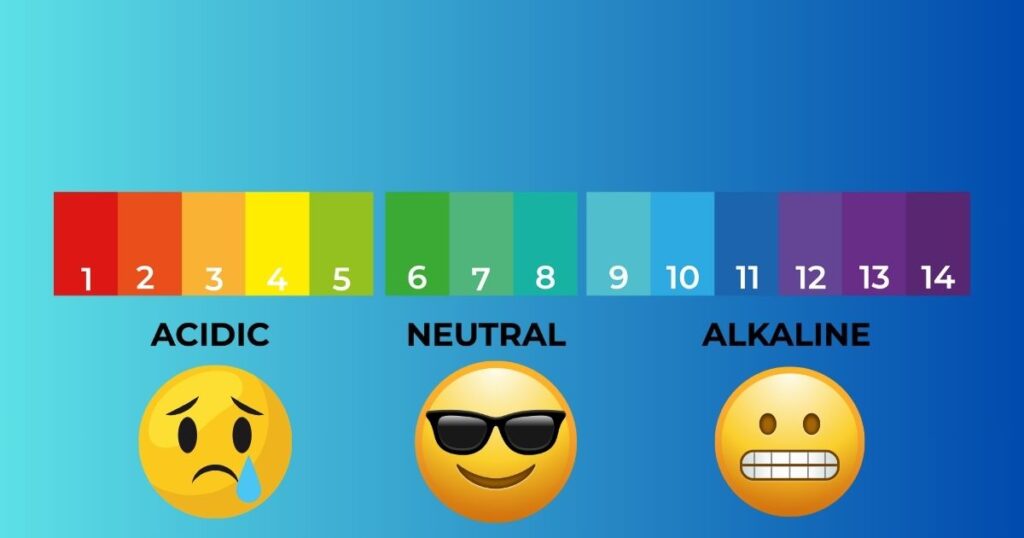
3. Total Alkalinity – Your pH Buffer
Think of alkalinity as your pH’s bodyguard. It prevents rapid pH swings and keeps your water stable.
Alkalinity Increaser (Sodium Bicarbonate): The primary chemical for raising alkalinity Ideal Range: 80-120 ppm
Secondary Chemicals for Advanced Pool Care
Calcium Hardness
Prevents water from becoming corrosive or scale-forming. Ideal Range: 150-300 ppm
Cyanuric Acid (Stabilizer)
Protects chlorine from being destroyed by UV rays – especially important in sunny Tennessee! Ideal Range: 30-50 ppm
Algaecides
Preventive treatment that works alongside chlorine to prevent algae growth. When to Use: Weekly during swimming season, or when you notice early signs of algae.
Testing Your Pool Water: The Foundation of Good Chemistry
How Often to Test
- During Swimming Season: 2-3 times per week
- Off Season: Once per week
- After Heavy Rain or Pool Parties: Within 24 hours
⚡ Reality Check: “That chlorine smell means your pool is clean, right?” Wrong! A strong chlorine odor usually means you need MORE chlorine, not less.
Testing Methods
- Test Strips: Quick and convenient, good for basic testing
- Liquid Test Kits: More accurate, better for precise adjustments
- Digital Testers: Most accurate but higher initial cost
Step-by-Step Pool Chemical Routine
💪 Pool Owner Mindset: “Consistency beats perfection. Small, regular adjustments prevent big, expensive problems.”
Daily Tasks (During Swimming Season)
- Check skimmer baskets and empty if needed
- Visual inspection for algae or debris
- Run pool pump for 8-12 hours
Weekly Tasks
- Test water chemistry (chlorine, pH, alkalinity)
- Add chlorine tablets to skimmer or chlorinator
- Brush pool walls and vacuum if needed
- Clean pool filter (rotate if you have spares)
Monthly Tasks
- Test calcium hardness and cyanuric acid levels
- Deep clean pool filter
- Check pool equipment for proper operation
- Add algaecide as preventive measure
Common Pool Problems and Chemical Solutions
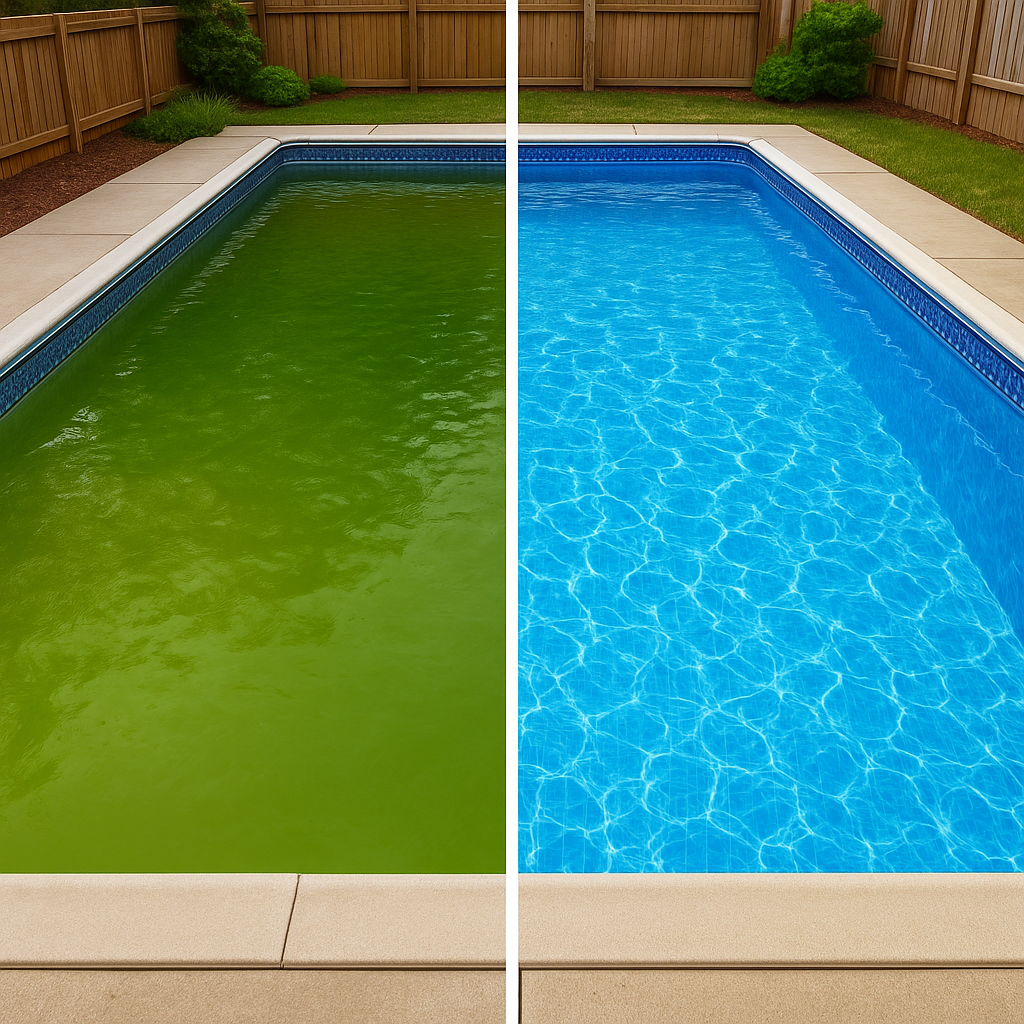
Cloudy Water
Possible Causes: Low chlorine, high pH, poor filtration, or high bather load Solutions:
- Shock pool with granular chlorine
- Adjust pH to 7.2-7.4
- Run filter continuously until clear
- Consider using a clarifier
Green Water (Algae)
Immediate Action:
- Test and adjust pH to 7.2
- Shock pool with 2-3 times normal chlorine amount
- Add algaecide according to package directions
- Brush all pool surfaces
- Run filter continuously and clean/backwash frequently
Strong Chlorine Smell
Surprising Truth: Strong chlorine odor usually means you need MORE chlorine, not less. The smell comes from chloramines (used-up chlorine). Solution: Shock the pool to break down chloramines.
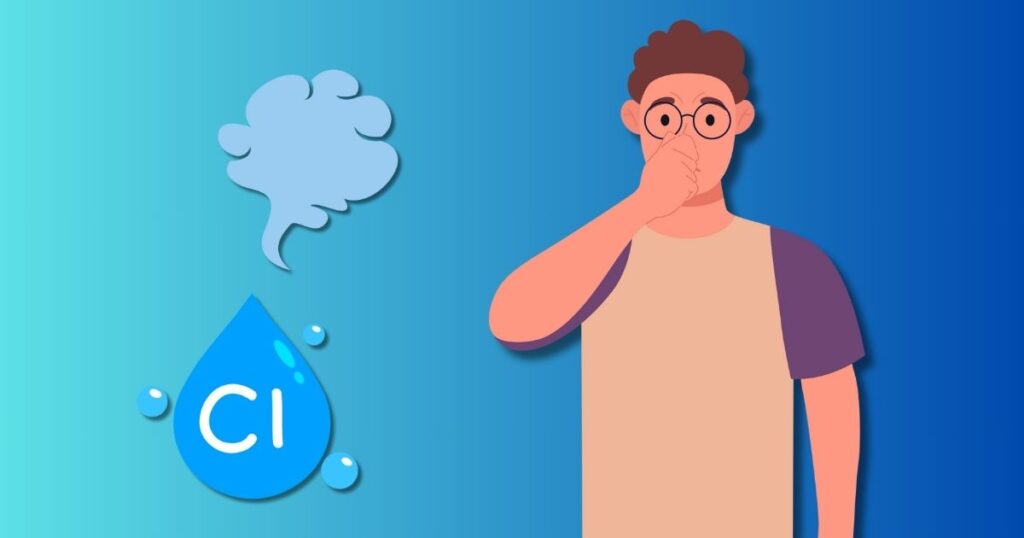
🌡️ Tennessee Truth: “Our 90°F summer days don’t just make you sweat—they make your pool chemicals work overtime too.”
Tennessee-Specific Considerations
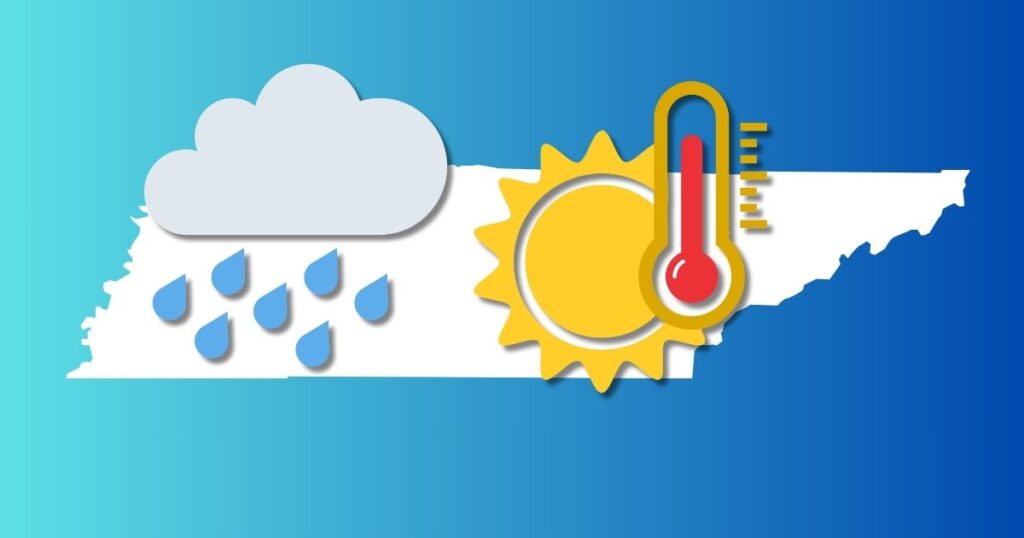
Hot Summer Challenges
- Higher temperatures increase chemical consumption
- More frequent testing needed
- Consider using stabilized chlorine to prevent UV breakdown
- Monitor pH more closely as heat can cause fluctuations
Seasonal Transitions
- Spring Opening: Shock heavily and balance all chemicals before swimming
- Fall Closing: Gradually reduce chemical levels while maintaining basic sanitation
Local Water Considerations
Tennessee’s water can vary significantly by region. Well water may require different treatment than city water. Consider having your fill water tested to understand your starting point.
Money-Saving Tips for Pool Chemicals
Buy in Bulk During Off-Season
Purchase chemicals in late fall or early spring for better prices.
💰 Smart Spending: “Buying pool chemicals in January instead of July can save you 30-40% on your annual chemical costs.”
Store Chemicals Properly
- Keep in cool, dry location
- Never mix different chemicals
- Store liquid chlorine away from heat sources
- Replace chemicals that are over 2 years old
Safety First: Chemical Handling Best Practices
Essential Safety Rules
- Always add chemicals to water, never water to chemicals
- Never mix different chemicals together
- Store chemicals away from children and pets
- Read all labels before use
⚠️ Safety Reminder: “Respect your pool chemicals like you’d respect power tools—they’re incredibly useful when used properly, potentially dangerous when not.”
When to Call a Professional
While most pool chemical issues can be handled by homeowners, consider professional help for:
- Persistent algae problems after multiple treatments
- Equipment malfunctions affecting water chemistry
- Major chemical imbalances that don’t respond to normal treatment
- If you’re uncomfortable handling certain chemicals
Conclusion
Mastering pool chemicals is a journey, not a destination. Start with the basics – chlorine, pH, and alkalinity – and build your knowledge over time. Consistent testing and gradual adjustments will keep your pool sparkling and safe all season long.
🏊♀️ Final Thought: “The best pool chemical routine is the one you’ll actually stick to. Start simple, stay consistent, and enjoy more swimming, less troubleshooting.”
Remember, every pool is unique, and what works for your neighbor might need tweaking for your setup. Keep detailed records of what chemicals you add and when, so you can identify patterns and refine your routine.
With Tennessee’s long swimming season, investing time in understanding pool chemistry will pay dividends in crystal-clear water and more time enjoying your pool rather than fighting problems.
Have questions about pool chemicals or facing a specific water chemistry challenge? We’d love to help! Share your questions in the comments below or reach out to us directly. Your question might just inspire our next in-depth guide.
